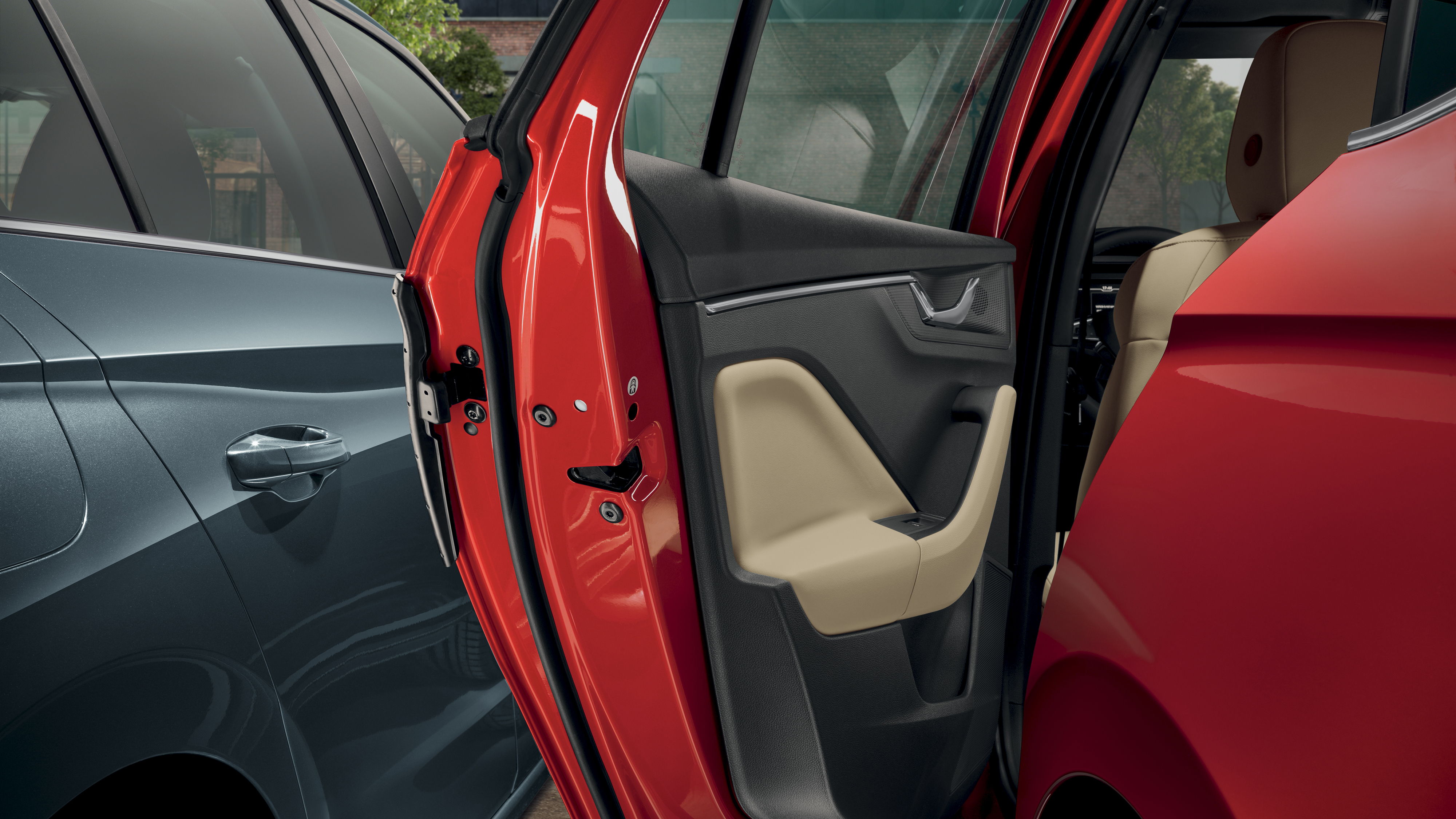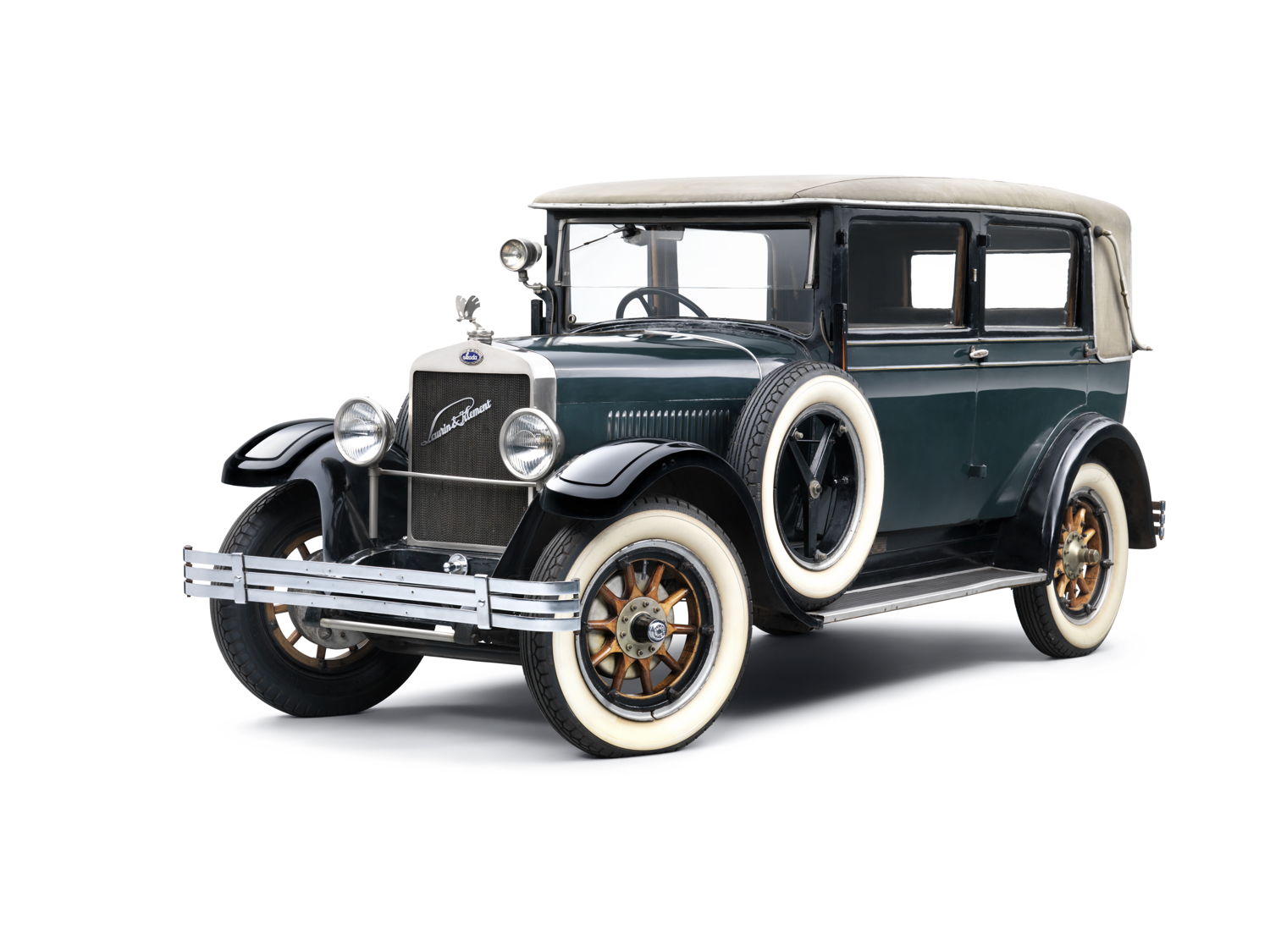ŠKODA: a tradition of Simply Clever solutions

› ŠKODA Simply Clever features have a long history dating back to the 1920s
› Surprisingly simple details make drivers’ lives easier
› ŠKODA has implemented more than 60 Simply Clever solutions to date
Mladá Boleslav, 26 February 2020 – Innovative technology and inventiveness have been
the hallmarks of ŠKODA cars from the very beginning. Their development has always been
centred around the driver’s needs. Even in its early years, the brand implemented solutions
that were considered ingenious and surprisingly simple. This has not changed over the
decades, but the concept has been perfected and the term ‘Simply Clever’ is now strongly
associated with the brand’s identity. To date, ŠKODA has implemented more than 60 of these
Simply Clever features that make automotive life significantly more enjoyable. The overview of
Simply Clever features is available at ŠKODApedia.
Martin Soukup, Head of Strategic Product Planning at ŠKODA AUTO, explained, “Simply Clever
features are important to our customers, which is why we select them according to special criteria.
These solutions are needed by customers and should add real value for ŠKODA drivers. At the same
time they must also be easy to use, work reliably, withstand stress tests, and meet our high safety
standards.”
Simply Clever features have been a hallmark of modern-day ŠKODA models since 2001
The Simply Clever concept dates back to the first-generation SUPERB introduced in 2001. It provided
the debut for the umbrella, which was available as standard or an option. The breakthrough followed
when the ROOMSTER concept car was introduced at the IAA in Frankfurt in 2003. Smart features
such as sliding rear seats and swivel front seats were particularly well-received. The enthusiastic
response to the equally unconventional yet practical ideas encourages ŠKODA to come up with more
and more new intelligent solutions.
To date, ŠKODA has implemented more than 60 Simply Clever features that make drivers’ lives
easier. And ingenuity continues to drive the design engineers. It is often the tiny details that prove
incredibly helpful and practical in everyday life: the umbrella in the driver’s door, the ice scraper in the
fuel filler flap – now including a tyre tread depth gauge – and the ticket holder on the A-pillar have
become real ŠKODA classics.
The KAMIQ, for example, presents yet another ingenious idea. It is the first model in its segment to be
available with automatic door-edge protection, which protects the car itself as well as vehicles parked
next to it from dents and scratches when opening the doors. The multifunctional shelf under the boot
cover is equally very handy. It is the perfect place to dry out an umbrella, and also allows clothes or
other items to be neatly stored separately.
ŠKODA provides intelligent solutions when it comes to connectivity too. Smartphones and tablets can
be paired with the vehicle wirelessly or via modern USB-C sockets from all seats. A particularly
well-thought-out solution is the multimedia cradle for the centre console, which is a handy place for
a smartphone, car park ticket, some coins and keys. The waste bin with lid in the door trim is
extremely helpful too. This clever feature ensures the interior remains clean and tidy at all times.
The boot can also be kept tidy with ease thanks to the compartment under the false boot floor.
This enables smaller items and equipment that are not constantly needed to be stowed out of sight.
Other current examples of typical Simply Clever features include the storage compartments for highvis
vests, the bungee cord in the door trim, the snow brush stored in the umbrella compartment in the
driver’s door, the retractable parcel shelf, the card holder in the Jumbo Box and the removable LED
torch in the boot.
Practical and easy to use
All of these examples reflect ŠKODA’s philosophy that every Simply Clever solution must be practical
and easy to use. In other words, they must be functional features that make life easier, whilst being
both simple and affordable. The brand’s considerations are always centred around the driver and their
needs. Many solutions may seem surprisingly simple, but the journey from the initial idea to the
finished product can be a long and sometimes arduous one. After all, every feature has to pass
numerous endurance and stress tests to ensure they work reliably and safely throughout the lifetime
of the car. And the funnel integrated into the lid of the windscreen washer tank is no exception.
This innovative feature has impressed to such an extent that ŠKODA is now fitting all vehicles with this
intelligent detail and offering it as a ŠKODA Genuine Accessory for retrofitting.
Fourth time’s the charm
Martina Tomanová from Strategic Product Planning at ŠKODA AUTO described how an initial idea
was transformed into such a smart feature: “Many drivers had experienced it and it wasn’t unknown to
us either: when refilling the windscreen washer tank, some of the liquid would miss and drip through
the engine compartment onto the ground. This is due to screenwash and antifreeze bottles having a
wide neck or the inlet on the car’s container being positioned too low. We discussed numerous options
and examined various technical variants to solve the problem, before eventually coming up with the
optimal solution. The result is now well-known: an innovative lid that turns into a funnel in an instant,
making it easier to refill the windscreen washer tank.”
Simply Clever solutions date back to the 1920s
In 1925, directly following the involvement of the Pilsen-based engineering company at
Laurin & Klement, the LAURIN & KLEMENT / ŠKODA 110 was launched, and the car demonstrated
the brand’s ingenuity even back then. This is because the manufacturer used a uniform ladder-frame
chassis with a wheelbase of 2,950 mm. which was available to customers in four versions with an
enclosed body and one roadster version. In addition to these ŠKODA also offered the model as an
open-top phaeton including up to three rows of seats, the middle row of which could be folded down to
give the rear passengers more legroom. In addition, the windscreen could be folded forward to allow
for a cooling breeze on hot days. There was no need to empty the boot to get to the spare wheel in the
event of a puncture – two spare wheels were mounted at the front, one on either side of the bonnet.
With its loading floor measuring 1,750 × 1,580 mm and 400 mm deep as well as a payload of 500 kg,
the two-seater commercial vehicle version was even more practical. The car could be quickly
transformed into a four-seater, therefore also making it perfect for family outings at the weekend.
ŠKODA introduced the POPULAR in 1934. It boasted a central tubular frame and transaxle
arrangement (front-mounted engine, gearbox at the rear) to give the driver and front passenger more
legroom. Having originally developed it for the police and customs, the manufacturer would soon also
offer the POPULAR with special winter equipment. Removable skis under the front wheels and snow
chains on the powered rear axle ensured that the car stayed on track and made good progress, even
on snowy mountain roads.
Interview with Martin Soukup, Head of Strategic Product Planning at ŠKODA AUTO, on Simply Clever
Mr Soukup, where do all the ŠKODA Simply Clever ideas actually come from?
Martin Soukup: We meticulously analyse the satisfaction surveys completed by our existing and
potential customers. This allows us to find out which features would be useful to them. Then, individual
teams of experts ‘live’ the Simply Clever concept to come up with specific suggestions on how to make
automotive life even easier. Many suggestions come from our staff too. After all, almost all of us drive
cars and we seek solutions that make driving more comfortable and convenient for everyone.
What happens to all the ideas and suggestions you receive?
Soukup: We start by checking whether the ideas are in line with our brand values. This means that
a suggestion must address customer needs. Then, the proposed solution must be truly beneficial for
the driver and passengers, i.e. it must serve a useful purpose. Finally, the new feature must be easy to
use and work reliably. Before a Simply Clever idea actually goes into production, it has to undergo
numerous endurance and stress tests. And if it meets our high safety standards too, there is nothing to
prevent it from being introduced into production.
How long does all of this take, and how many members of staff are involved in the
implementation process?
Soukup: That varies. Which department deals with it depends on whether it is a convenience or
comfort feature in the interior or a detail under the bonnet, for example. In any case, we work together
with colleagues from the innovation centre and other technical departments who evaluate and assess
proposed features with intention of potentially introducing them into serial production. Finally, Simply
Clever features undergo rigorous endurance and stress tests. This can take anywhere from a few
weeks to several months. We aim to keep coming up with new, clever ideas and therefore enable the
pioneering spirit of our founding fathers to live on.

